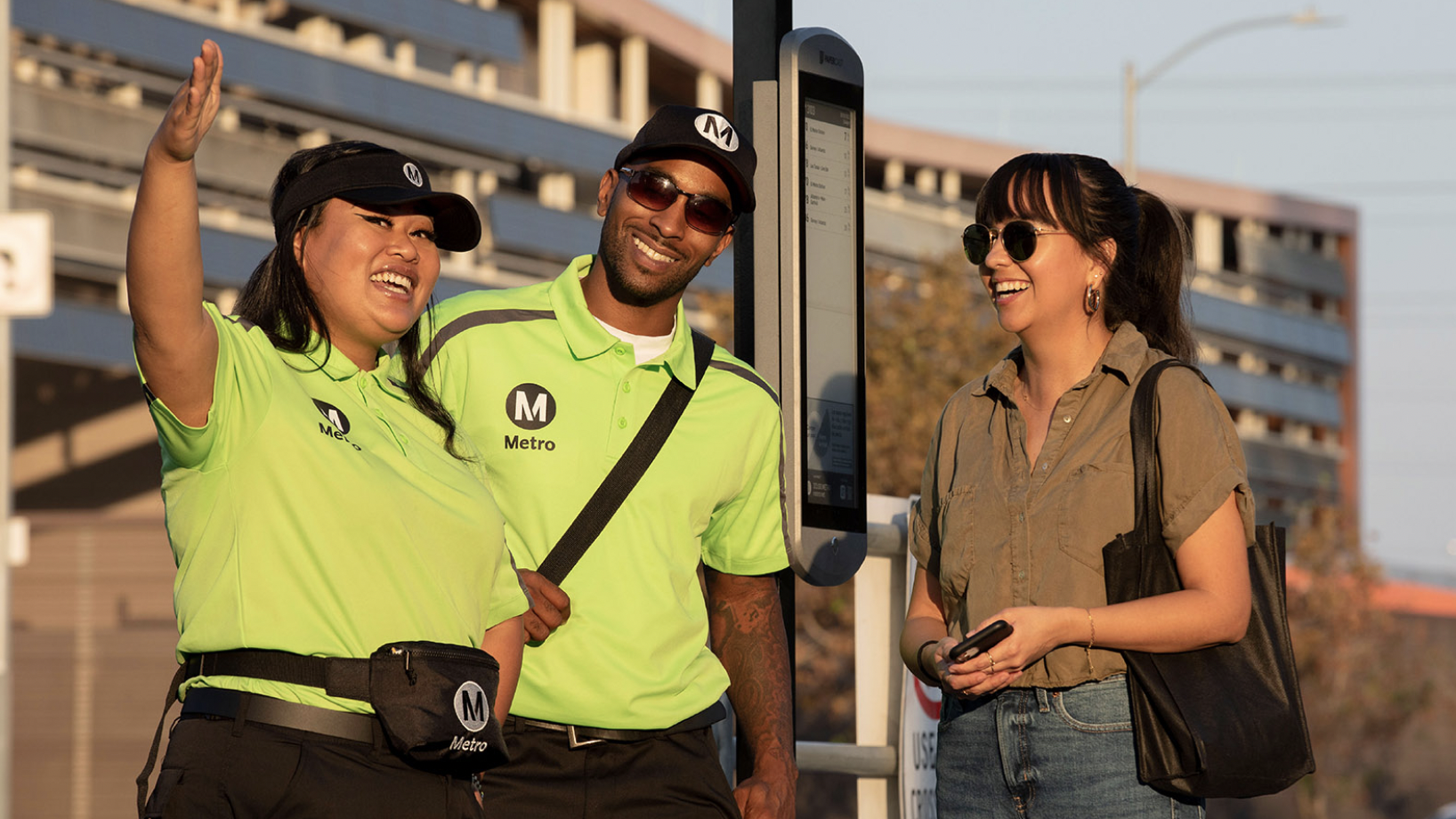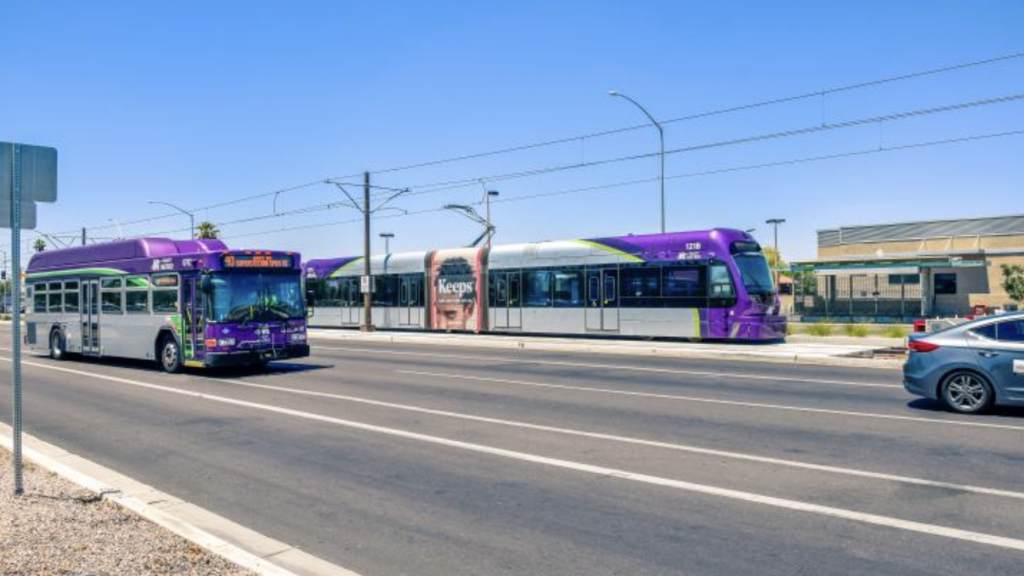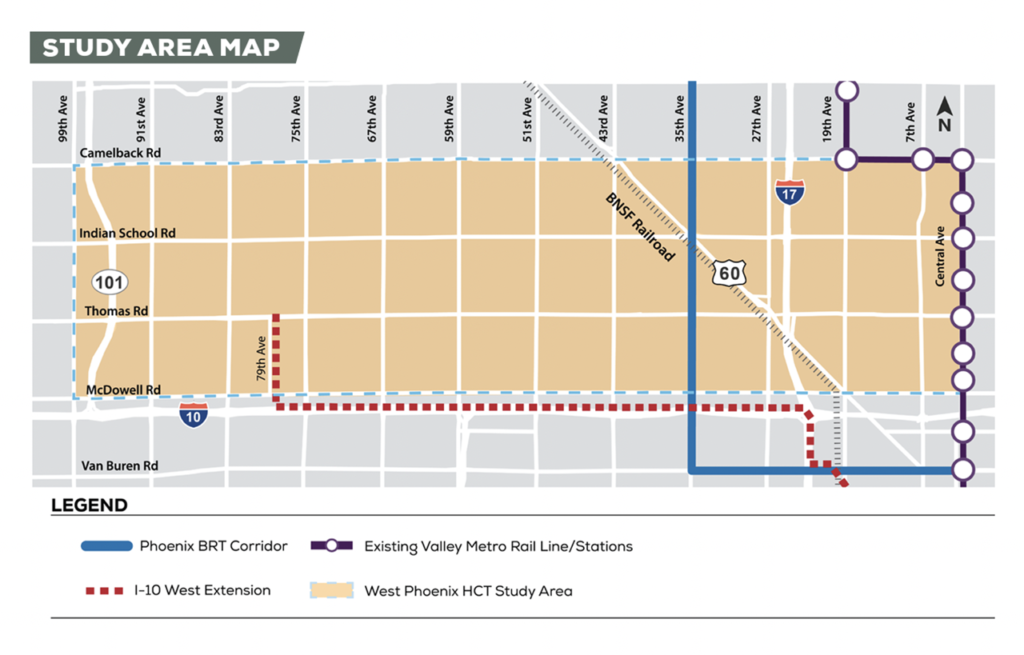
Transit Briefs: LACMTA, Valley Metro
Written by Marybeth Luczak, Executive Editor
LACMTA’s ambassadors support and connect riders to resources and report maintenance and safety concerns. (LACMTA Photograph)
The Los Angeles County Metropolitan Transportation Authority (LACMTA) officially launches its ambassador pilot program. Also, Valley Metro begins a west Phoenix transit study.
LACMTA on March 6 reported holding an official launch and celebration for its ambassador pilot program at Union Station. The LACMTA Board in June 2022 signed off on the program and two staffing contracts. It has successfully trained nearly 300 new ambassadors for deployment on its rail and bus network, as part of a “multi-layered and reimagined” approach to public safety. The classroom and field training covered conflict de-escalation, disability awareness, trauma-informed care, cultural and situational awareness, LACMTA Operations and other personal and public safety issues.
Ambassadors serve “as a welcoming and visible presence” to support riders who need assistance with fare payment systems as well as transit system navigation; to connect riders with resources; and to report maintenance, cleanliness or safety issues. They are not security officers and do not replacing existing security staff or law enforcement, according to LACMTA.
Ambassadors have been deployed along certain rail routes since the first cohort was trained in October 2022, providing customer support first on the K (Crenshaw) Line, and then gradual expansion to the A Line (Blue), B and D Lines (Red, Purple), and L Line (Gold), as well as key bus lines, including Bus Line 20, 720, 40, 210 and the J Line (Silver).
Easily recognizable in special green polo shirts and vests and equipped with communication devices, they are available every day, with work shifts covering 14-16 hours: 6 a.m. to 10 p.m. on weekdays and 8 a.m. to 10 p.m. on weekends, LACMTA reported.
“In survey after survey, our customers have told us that they want more wrap-around support for riders on Metro [LACMTA],” said LACMTA CEO Stephanie Wiggins said. “Metro Ambassadors are a key part of delivering that support, along with the other layers of our Metro team. We know we’ve got a lot of work to do to deliver the type of transit service people expect and deserve on our system—and we’re far from done.”
In a related development, last month, the Citizens’ Independent Transportation Trust (CITT) in Miami-Dade, Fla., launched its own ambassador program.

Valley Metro and the city of Phoenix, Ariz., are conducting a study to evaluate high-capacity transit options—such as bus rapid transit (BRT), streetcar or light rail—in west Phoenix. The study area boundaries are Camelback Road on the north, McDowell Road on the south, Central Avenue on the east, and 99th Avenue on the west.

The West Phoenix High-Capacity Transit Alternatives Analysis “will ultimately recommend the best transit type and potential route(s) to meet the transportation needs of Maryvale residents,” Valley Metro reported March 6. Building upon prior studies, it will integrate other transit planning efforts, such as the Phoenix BRT project, “to achieve a cohesive, coordinated transit system.”
Community outreach and engagement will be conducted throughout the study, including public meetings and updated website information.
Once the alternatives analysis is complete, the recommended transit type and route (the locally preferred alternative) is expected to move forward for input from the community and elected officials by the end of this year.



